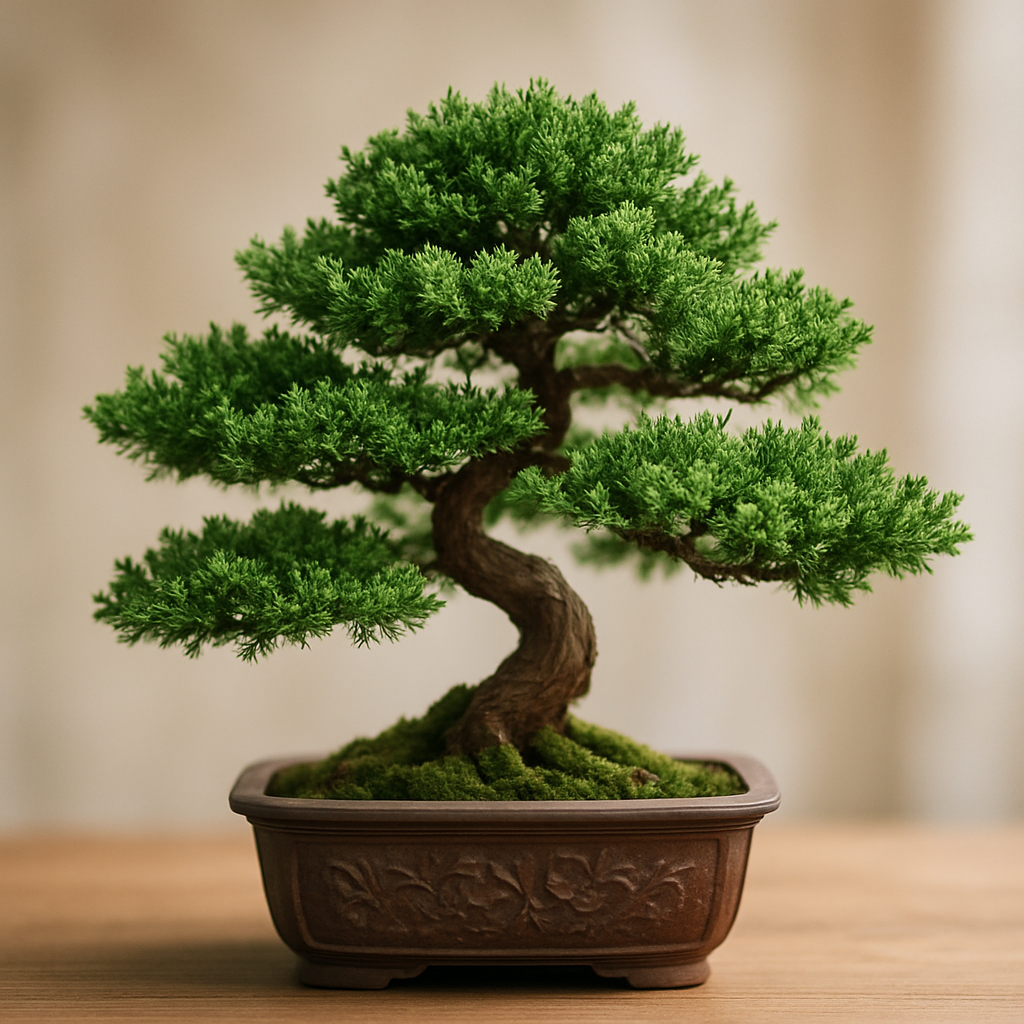Indoor Juniper Bonsai Care for Beginners

Juniper bonsai are a popular choice for beginners due to their hardiness and ease of care. However, they still require specific care to thrive indoors. Understanding their needs and providing the right environment will ensure a healthy and beautiful bonsai.
Light:
Juniper bonsai need plenty of bright, indirect light. They thrive in locations with at least 4-6 hours of sunlight per day.
- Ideal location: Place them near a sunny east- or west-facing window.
- Avoid direct sunlight: Direct sunlight, especially during the hottest part of the day, can scorch the leaves. If you only have a south-facing window, filter the sunlight with a sheer curtain.
- Supplement with grow lights: If you don’t have enough natural light, you can supplement with a grow light. Use a full-spectrum LED grow light and position it 12-18 inches above the bonsai.
Watering:
Proper watering is crucial for juniper bonsai. Overwatering is a common mistake that can lead to root rot.
- Check the soil moisture: Water your juniper bonsai when the top inch of soil is dry to the touch. Use your finger to check the soil moisture.
- Water thoroughly: When you water, water thoroughly until water drains out of the bottom of the pot.
- Avoid overwatering: Do not allow the bonsai to sit in standing water. Empty the saucer beneath the pot after watering.
- Watering frequency: Watering frequency will vary depending on the season, temperature, and humidity. In general, you will need to water more frequently during the growing season (spring and summer) and less frequently during the dormant season (fall and winter).
Fertilizing:
Juniper bonsai need regular fertilization during the growing season to provide them with the nutrients they need to thrive.
- Use a balanced bonsai fertilizer: Use a balanced bonsai fertilizer with an N-P-K ratio of 10-10-10 or 20-20-20.
- Fertilize regularly: Fertilize your juniper bonsai every two weeks during the growing season.
- Reduce fertilization during the dormant season: Reduce fertilization to once a month during the dormant season.
- Follow the instructions on the label: Always follow the instructions on the fertilizer label.
Pruning:
Pruning is essential for maintaining the shape and health of your juniper bonsai. There are two main types of pruning: pinching and structural pruning.
- Pinching: Pinching involves removing the tips of new shoots to encourage denser foliage and maintain the bonsai’s shape. Use your fingers or small scissors to pinch off the tips of new shoots. Pinch back new growth regularly during the growing season.
- Structural Pruning: Structural pruning involves removing larger branches to maintain the bonsai’s overall shape and create a more balanced design. Prune older branches in the late winter or early spring, before new growth begins. Use sharp, sterilized pruning shears.
- Remove dead or diseased branches: Remove any dead or diseased branches as soon as you notice them. This will help to prevent the spread of disease and maintain the bonsai’s health.
Temperature and Humidity:
Juniper bonsai prefer temperatures between 60-75°F (15-24°C) during the growing season. In winter, they can handle cooler temperatures but should be protected from frost.
- Humidity: Maintain 40-60% humidity. Mist the foliage regularly, especially in dry indoor environments, or place on a humidity tray.
Repotting:
Repot your juniper bonsai every 2-3 years in early spring before new growth begins.
-
Soil: Use a well-draining bonsai soil mix, such as akadama, pumice, and lava rock.
-
Root pruning: Trim about 1/3 of the roots to encourage new growth and prevent root binding.
Common Problems:
-
Yellowing Leaves: Can be caused by overwatering, underwatering, nutrient deficiencies, or pests.
-
Brown Tips: Often due to low humidity or salt accumulation in soil. Flush soil periodically.
-
Spider Mites: Look for fine webs on foliage. Treat with insecticidal soap.
-
Scale Insects: Appear as small bumps on stems and leaves. Remove manually or use horticultural oil.
-
Root Rot: Caused by overwatering. Signs include soft, black roots and wilting.
By following these care tips, you can ensure that your indoor juniper bonsai thrives and remains a beautiful addition to your home.
Recommended Products
Here is a product recommendation to help you care for your Juniper bonsai:
Juniper Bonsai Fertilizer
$16.99A specialized fertilizer formulated for juniper bonsai trees.